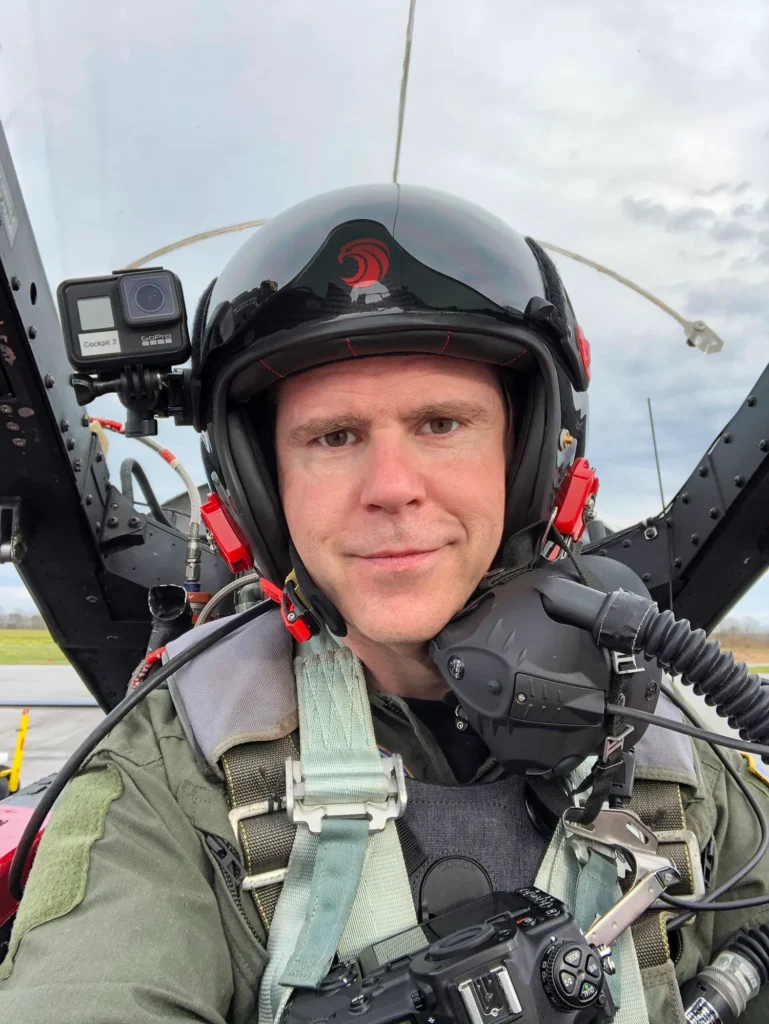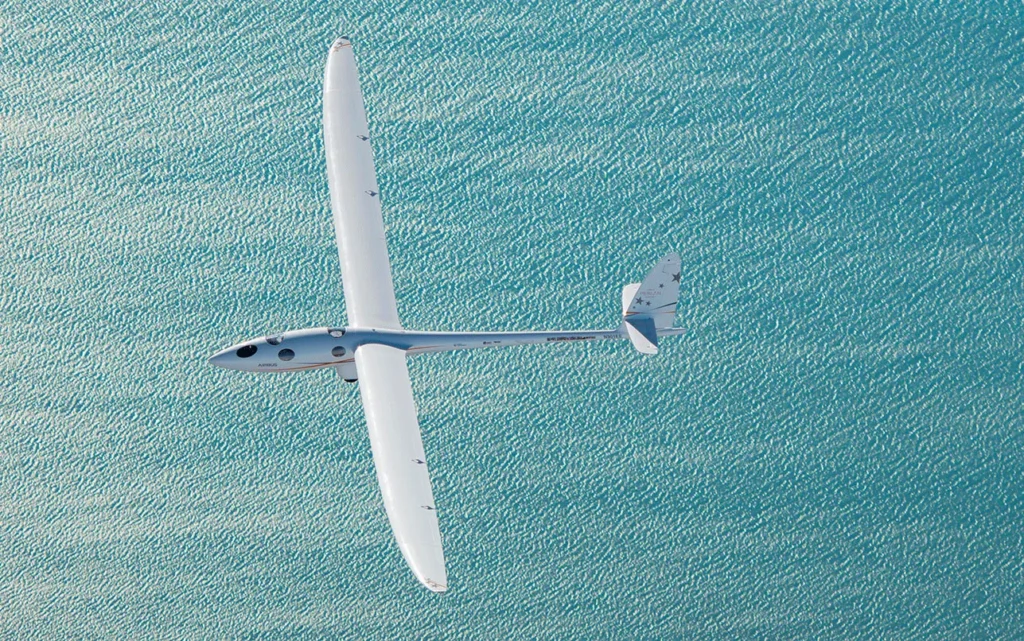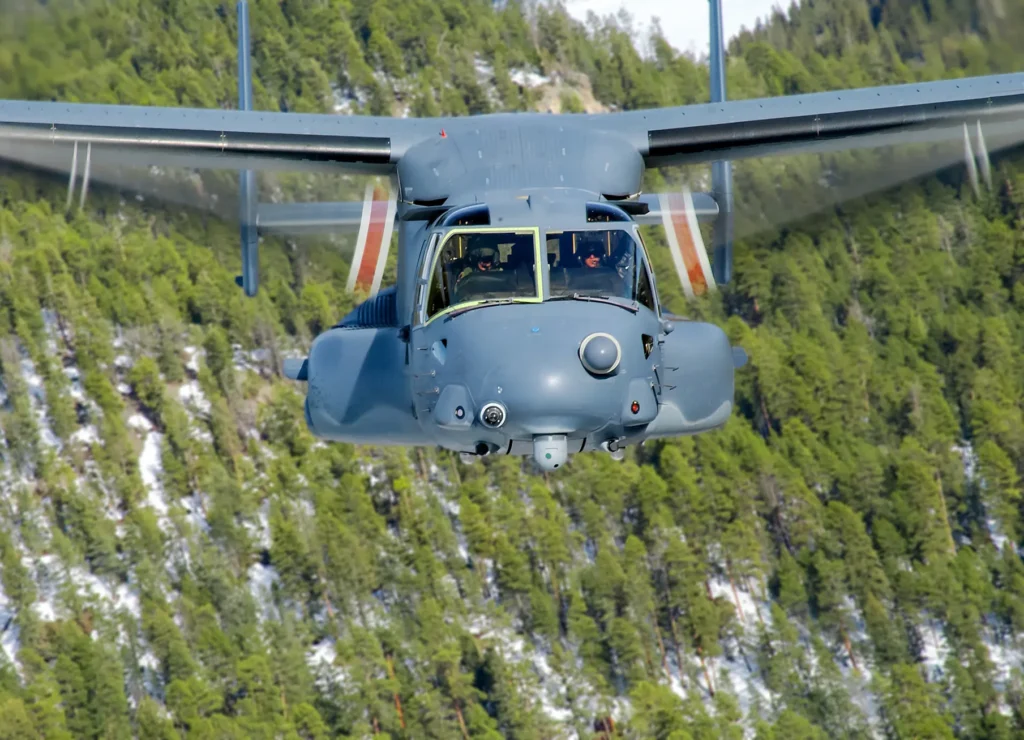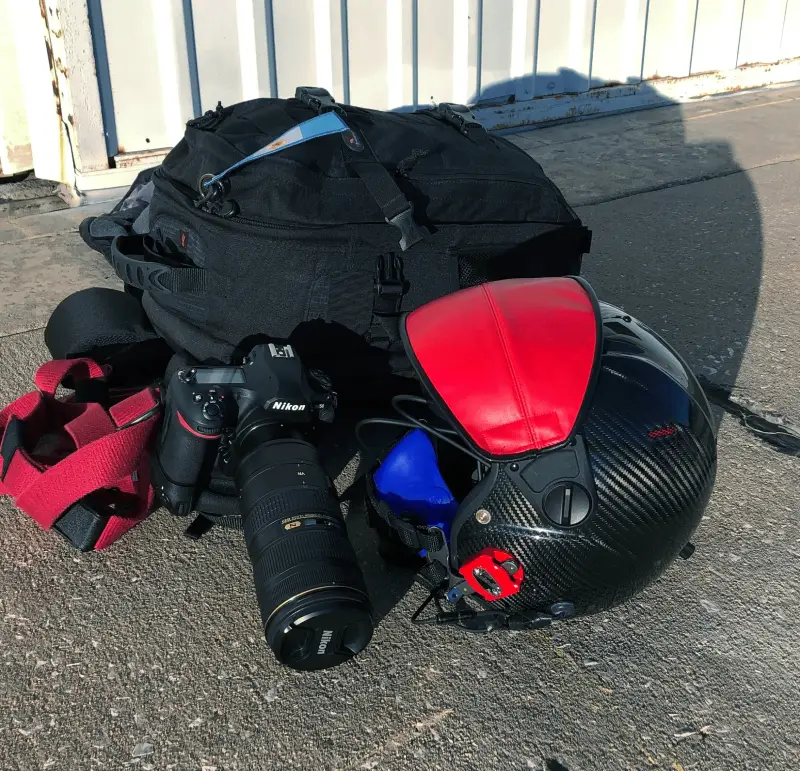Who is James Darcy?
James Darcy leads external communications in North America for a global aerospace company and is also a seasoned aerial photographer whose work has appeared on the covers of publications around the world, including Aviation Week, Rotor & Wing, Aviation News, Flug Revue and Air et Cosmos.
He posts some of his work on Instagram @jsd_photography.
Prior to moving to the corporate sector, Darcy was Director of Communications for U.S. Navy and Marine Corps aviation programs.
James’ career with the Navy spanned ten years and included work as communications lead for the V-22 Osprey, F/A-18 Super Hornet and X-31 VECTOR, among others.
Prior to working for the Navy, he was a writer and photographer for a U.S. Army newspaper.
James lives in Virginia, and is the father of two boys, ages 19 and 21. When he is not riding in helicopters, he enjoys building them out of Legos with his sons.

How did James Darcy become James Darcy?
The track of my career has involved a lot of unexpected turns and a fair amount of luck. When I was a student, I never would have imagined I would be working either in communications or in aviation.
I studied developmental psychology in college and graduate school.
When I was a kid, my father helped me build a model of a P-51D Mustang, so maybe that planted some sort of seed.
And in kindergarten, I earned the nickname “Motormouth” because I talked so much, so I suppose it should have been obvious that communications would eventually become my career.
You have a very extensive experience in military communication. How did you come in contact with it?
My communications career began with a job as a photojournalist for an Army newspaper (despite being a civilian) way back in 1998.
I didn’t know anything about photography, but I had to learn fast.
After a couple years, I took a similar job at Naval Air Station Patuxent River, Maryland, where the U.S. Navy and Marine Corps conduct developmental testing for all their aircraft and aircraft systems.
It’s also home to the U.S. Naval Test Pilot School, whose graduates include the likes of Neil Armstrong and Jim Lovell, to name a few.
My job evolved into public affairs, which is the military equivalent of corporate communications.
I was a civilian but got to be public affairs officer for programs such as the V-22 Osprey and F/A-18 E/F Super Hornet, that’s also where I learned aerial photography.
By the time I left for a corporate job in 2009, I was overseeing public affairs for all Naval aviation program offices, and I also had the test wing’s photo and video shop as one of my divisions. I got to work with some amazingly talented and dedicated people, supporting an important cause.

Your assignments cover mainly aviation-related topics. How demanding is this topic when it comes to effectively interact with key-audiences?
Because my company is involved in both commercial and military aviation, both fixed wing and rotary, our key audiences are extremely varied: The flying public, the military, the airlines, elected officials, investors and so on. The key is understanding that each of these groups has widely different interests, needs and perspectives, with different cultures and different nomenclatures. Sometimes listening to your audiences is just as important as talking to them.

What do you think are the biggest challenges your field of work is facing in the coming years?
The COVID pandemic has impacted our industry in profound ways, and much of our efforts across the industry over this past year have revolved around restoring public trust in air travel.
At the same time, we have had to conserve cash while maintaining the health and wellbeing of global supply chains, on which the livelihoods of millions of people depend. The focus in coming years will be on emerging from this crisis stronger than we went into it.
At the same time, we have aggressive plans for the gradual decarbonization of aviation over the coming decades, and our commitment to that cause is deeply felt at every level of our company.
Top 3 elements, according to you, for a successful external communication campaign.
A communication campaign has to begin with a business strategy.
If you don’t have a clearly defined objective, you can fall into the trap of communicating just for the sake of it, or what a mentor of mine calls “tactics in search of a strategy.”
The second key is understanding your audience at a fundamental level and tailoring both your messages and your ways of delivering them to each individual audience.
If I had to choose just one more key element, I would say that it is not underestimating the roll of emotion in people’s decision-making.
Effective corporate communication isn’t just about impacting what people think, it’s about influencing what people feel.
Corporations that fail to see the value of human connection often find themselves wondering why the message they are trying to transmit is not the message people actually receive.
The most helpful technological platforms you have used in your career.
The keyboard. The ability to write well is the foundational skill in any field of communications. Visual, multimedia storytelling is more important than ever of course, but to succeed in business and in communications, you still need to be able to express yourself well with the written word.
Do you believe in achieving new records in terms of performances with non-combustion-powered aircrafts?
One of the most rewarding experiences of my career has been working with Perlan Project, a non-profit organization dedicated to soaring a glider into the stratosphere using nothing more than the energy found in the atmosphere itself.
In 2018, they set the world subsonic altitude record for level, wing borne flight, reaching 76,124 feet without an engine. Our next ambition is to reach the service ceiling of the pressurized Perlan 2 glider, which is 90,000 feet.
That would exceed the official record of the SR-71 and do so without an engine.
It really is the ultimate zero emission aircraft, and it is also an ideal research platform for atmospheric research, since it doesn’t contaminate the air around it in any way.
To reach those altitudes, we rely on “stratospheric mountain waves,” rising air currents only found a few places on earth. We conduct our flights in the Patagonian region of Argentina, soaring above the Andes mountains during the winter. It’s a challenging environment for aerial photography, but the aircraft and the scenery are absolutely beautiful together.

Environmentally friendly propulsion and unmanned-flight technologies are a key-element for the future of Aerospace and Defense Industry. Do you identify yourself with this vision?
I’m fortunate enough to work for a company that is very committed to making aerospace kinder to the environment, and we’ve set some very ambitious goals for ourselves.
It’s a great feeling to see so many people working on this priority with a real passion for it.
We are exploring alternate propulsion technologies such as hydrogen, sustainable aviation fuels, and ways of making airframes more fuel efficient regardless of the fuel type.
The Osprey as the future Presidential ‘helicopter’ to replace the Seaking?
When I worked for the Navy, I got quite involved with the Presidential Helicopter program, and I had a chance to fly on both the EH-101 and the S-92.
I was also public affairs officer for the V-22 Osprey, and I loved every flight hour in that amazing airframe, with both the Marine Corps and Air Force Special Operations Command.
As for the UH-3H Sea King, it was the first helicopter I ever flew in (or dangled under at the end of a rope), so it will always have a special place in my heart.
In other words, I am too biased to offer an objective opinion on this topic.

You are, on a regular base, an aircrew member, do you also fly by yourself?
My secret shame is that I have never gotten my pilot’s license.
I’ve had a few hours of stick/yoke time over the years (including in a blimp and in an aerobatic plane) but getting my license has always been something I’ve told myself I will do “one of these days.”
Now that my kids are in college (and I’m not getting any younger), I think it’s in my near future.
Living in a time in human history when it is actually possible to learn to fly, it seems like a shame not to do so.
Shooting pictures from an aircraft is not really the easiest task for a photographer. What are according to you the 3 essential tools an aeronautical photographer has to have in his/her bag in order to take-up the challenge?
The first priority – and the number one thing I look for if I’m hiring an aerial photographer instead of shooting something myself – is a focus on safety.
The photographer is an integral member of the aircrew with responsibilities for the safe conduct of the operation.
That begins with extremely thorough preparation on the ground, and it continues throughout the flight.
Photo shoots often involve flying dissimilar aircraft in close formation with dynamic maneuvering, and it only takes one moment of inattention — or a little poor planning — for that to end badly.
Photographers also need to look after their own personal safety.
I’m always amazed to see a photographer show up with $20,000 worth of camera gear and a $30 safety harness. Those people don’t get hired, at least not by us.
The second essential piece is an understanding of the limits of the aircraft and the pilots. It includes everything from engine performance to visibility to wake turbulence and extends to the pilots’ experience with formation flying and photography work.
I have flown with excellent pilots who could not fly formation well, and it’s important to recognize that and never ask pilots to go beyond their comfort levels.
And the final piece is the photography itself.
This mostly comes down to the technical elements: What shutter speed do you need to get motion blur on the rotors or propellers?
Is that shutter speed viable given the vibration of your own aircraft?
How will the windblast in the open door of your chase aircraft affect your camera’s stabilization or your gyro?
Will the outside air temperature be so low that it kills your batteries, or just gives you frostbite? (I’ve had both happen).

Taking photos from an airplane, in flight, requires a very detailed preparation and meticulous planning. What is the biggest challenge you face with time management during a shoot?
You never have as much time as you want, so the more detailed your planning, the more efficient you can be in the air.
In flight testing, test pilots use a test card that proscribes what test maneuvers will be flow in which order.
I create something very similar for my shoots.
Every minute in the air, you are spending money and burning gas (and which of them runs out first varies based on the project). When chasing gliders, you have the additional challenge of their lack of propulsion to maintain altitude.
Your dream airframe you haven’t worked on yet.
There are too many to name. I once asked Einar Enevoldson, the famous NASA test pilot who founded the Perlan Project, how many different aircraft he had flown over the decades of his career. After a minute’s thought, he said, “It was about 350, maybe a little more.” When I’ve flown with and photographed as many kinds of aircraft as Einar, I’ll be satisfied.
What advice would you give to young people who want to follow your career path?
When I was a small child, I wanted to be an astronaut.
As I grew up, I thought of all kinds of reasons why I shouldn’t or couldn’t be an astronaut; it seemed like something that other people did.
What I’ve come to realize over the years is that the people who becomes astronauts are the ones who just refuse to accept that it is for other people.
If you have a dream career, hold tight to that idea, and then do the really hard work to get you there.
Also, the best steps I’ve taken in my career have been the scariest ones, the ones where I thought I was in over my head and I didn’t know if I could succeed.
With a lot of hard work, a fair amount of luck and a little daring, all things are possible.

